
How Stephen Gould Scaled Its Capacity by 30% without Making a Single Hire
You can start gaining insights into your SaaS product’s performance and make data-driven decisions to optimize your business by tracking these common SaaS metrics:
Executive Summary:
You can start gaining insights into your SaaS product’s performance and make data-driven decisions to optimize your business by tracking these common SaaS metrics:
As the business world continues to shift towards Software as a Service (SaaS), companies are turning to data analytics and business intelligence tools to help them track their metrics and Key Performance Indicators (KPIs) in real-time.
By integrating BI capabilities into your SaaS apps, you can streamline workflows, manage resources and optimize performance. Dashboards and the insights they illustrate help businesses reveal where and how they can improve and optimize their overall processes and performance for maximum profitability.
In this article, we will explore some of the best SaaS dashboard examples and the most important metrics and KPIs to track your business performance.
A SaaS dashboard, or software as a service dashboard, is a business intelligence tool that provides users with real-time visibility and insights into their metrics to drive data-driven decisions. The SaaS dashboards allow users to monitor their performance, track key metrics, and analyze data from various sources in a centralized location.
SaaS dashboards are customizable and can be tailored to specific business needs. They may feature customizable visualizations, real-time alerts, and the ability to drill down into specific data points. Some SaaS dashboards also provide collaboration and communication functionalities that enable team members to be more productive and work together more effectively.
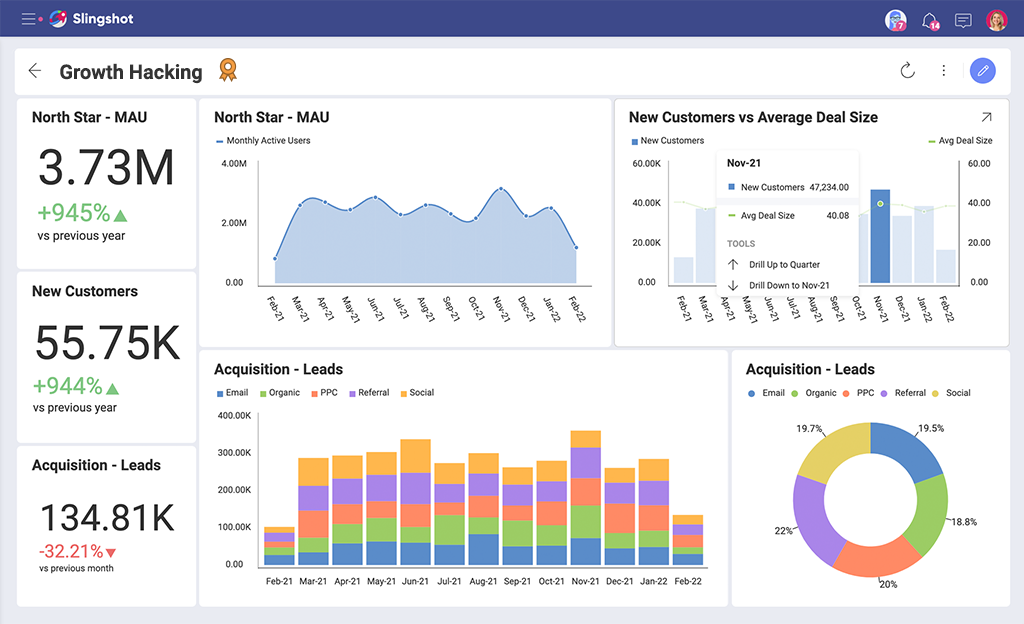
The metrics that you should include in your SaaS dashboard will depend on your specific business objectives. However, you can start gaining insights into your SaaS product’s performance and make data-driven decisions to optimize your business by tracking these common SaaS metrics:
A SaaS product dashboard comprehensively views your product’s performance and user engagement. With metrics and KPIs such as product adoption, user retention, user behavior analysis, and more, you can gain a complete understanding of your product and users. You can use this information to make smarter business decisions to optimize your product to meet your users’ needs better.
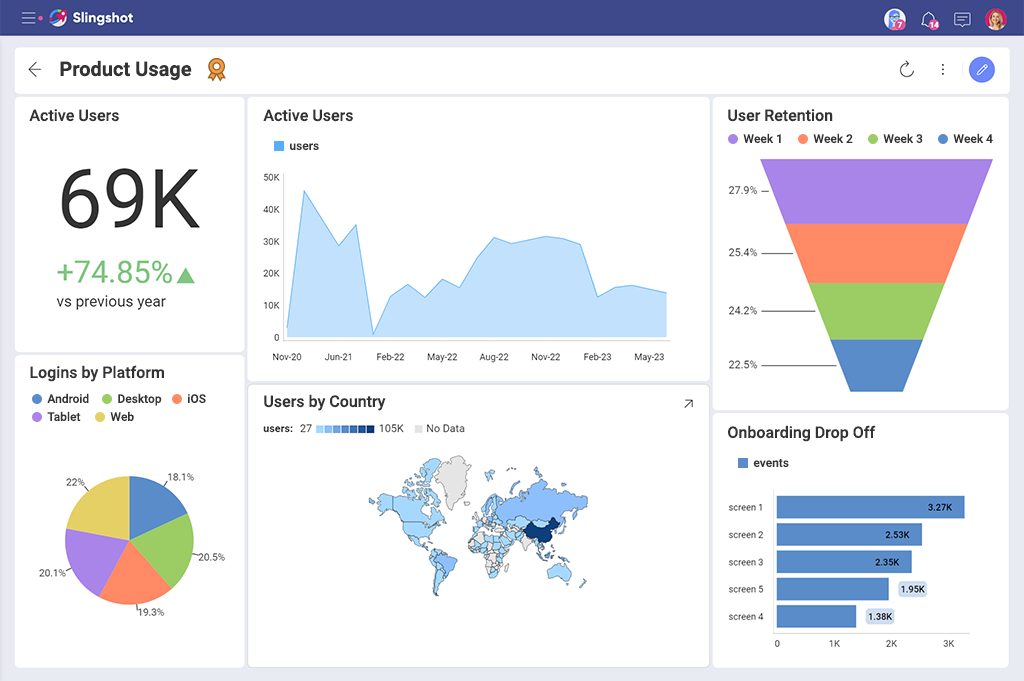
A SaaS sales dashboard is a tool that helps you track and analyze your sales performance. It provides real-time insights into your sales pipeline, customer acquisition, and revenue growth, helping you to identify opportunities for improvement and make data-driven decisions.
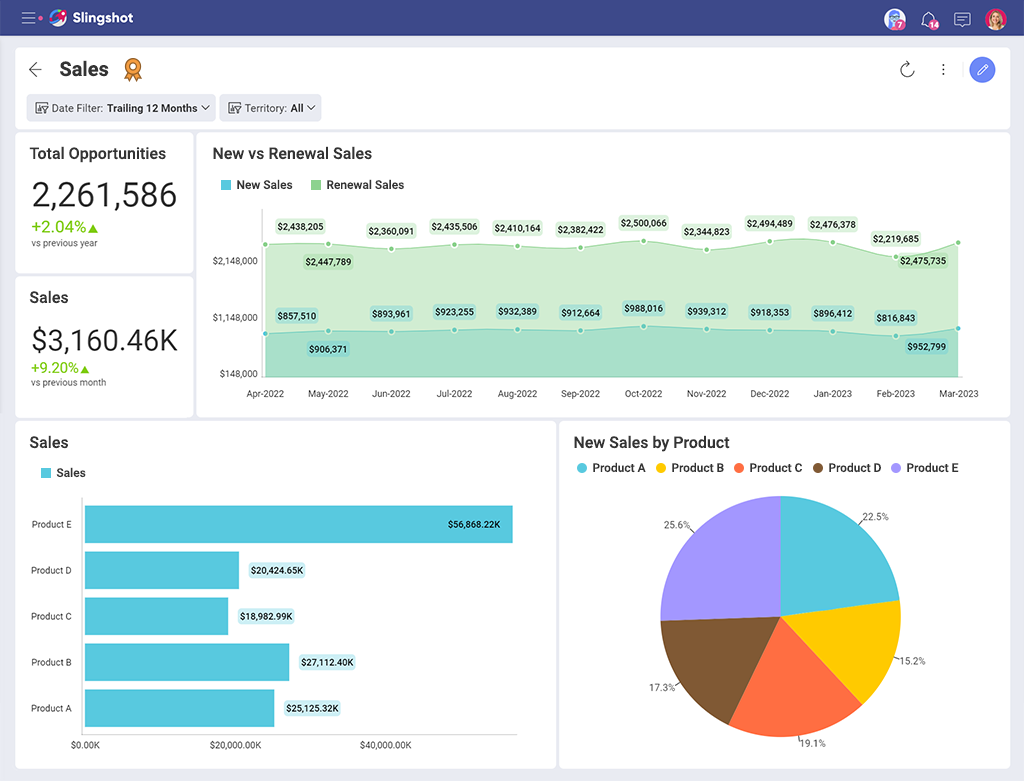
This SaaS dashboard provides instant visibility into the daily metrics that showcase whether the marketing activities are successful and drive leads. You can get real-time insights into your marketing campaigns, lead generation, and customer acquisition, helping you to identify what your users and targeted customers engage with and what you could potentially improve for better results.
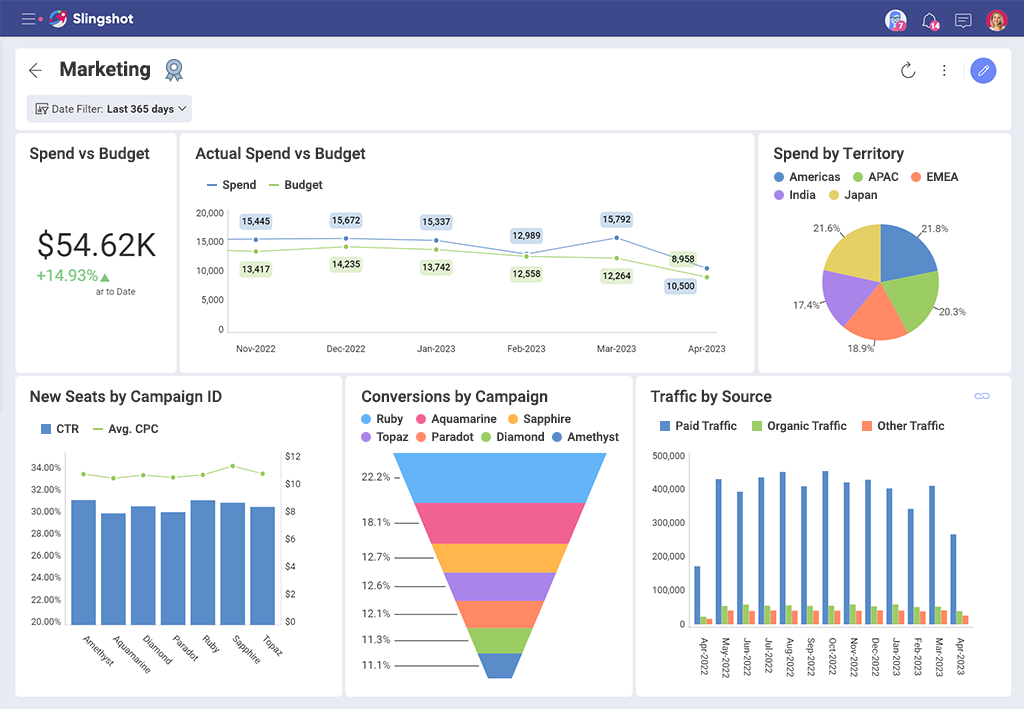
If you have a SaaS product / service and want to offer your users analytics capabilities, then embedded analytics is the right solution for you. Embedding analytics in your SaaS application allows you to improve your customer experience and create a new source of revenue. Analytics capabilities can help your customers view key business data in their natural workflow and easily spot trends and patterns in data that would’ve otherwise been missed. With access to real-time insights, your users can also make better-informed decisions that can guide their business success.
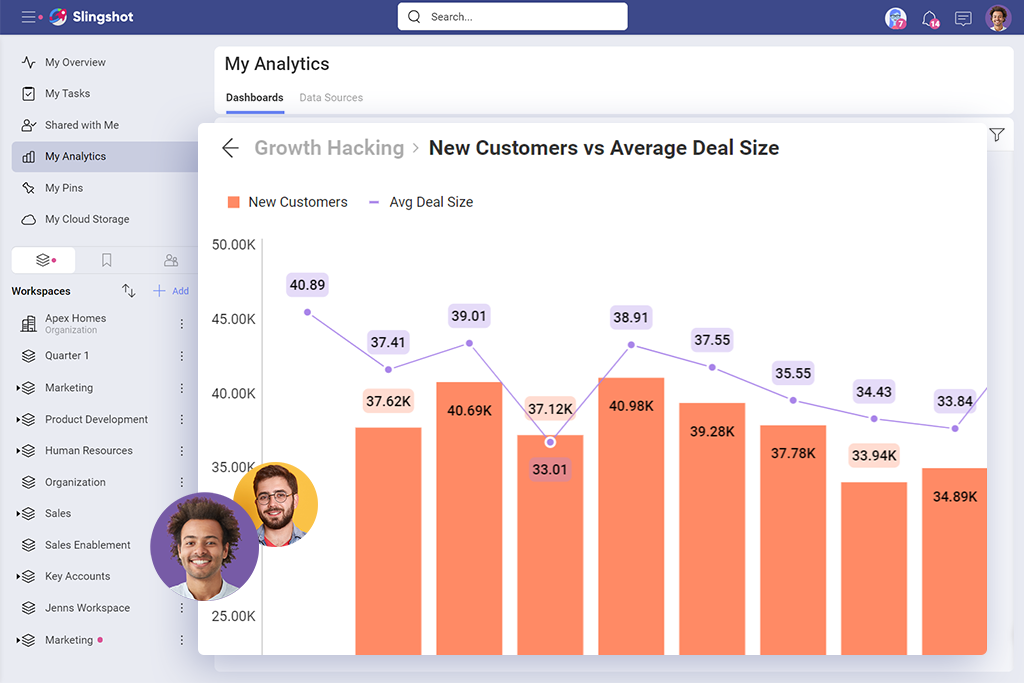
Slingshot makes it easier for users to be data-driven and quickly find the insights they need by providing them with an extensive catalog of analytics, data sources & sets, visualizations, and dashboards. On top of that, Slingshot is a productivity tool that simultaneously aggregates data analytics, project, task and content management, chat, and goals-based strategy benchmarking – in one intuitive app. Slingshot allows users to easily connect to different data sources, analyze data and create beautiful yet interactive dashboards in just a few clicks.
At its core, Slingshot is centered around data-driven characteristics that help teams stay on top of current data for campaigns through dashboards, KPI tracking, and KPI indicator spreadsheets that are converted into data analytics which are then easily shared. It also offers a set of statistical functions that allow you to receive more insights from your visualizations.
With Slingshot, you can accelerate time to insights and unlock your business data’s full potential.
Not convinced yet?
Try Slingshot for free and see for yourself how it can help you elevate your SaaS application.
SHARE THIS POST